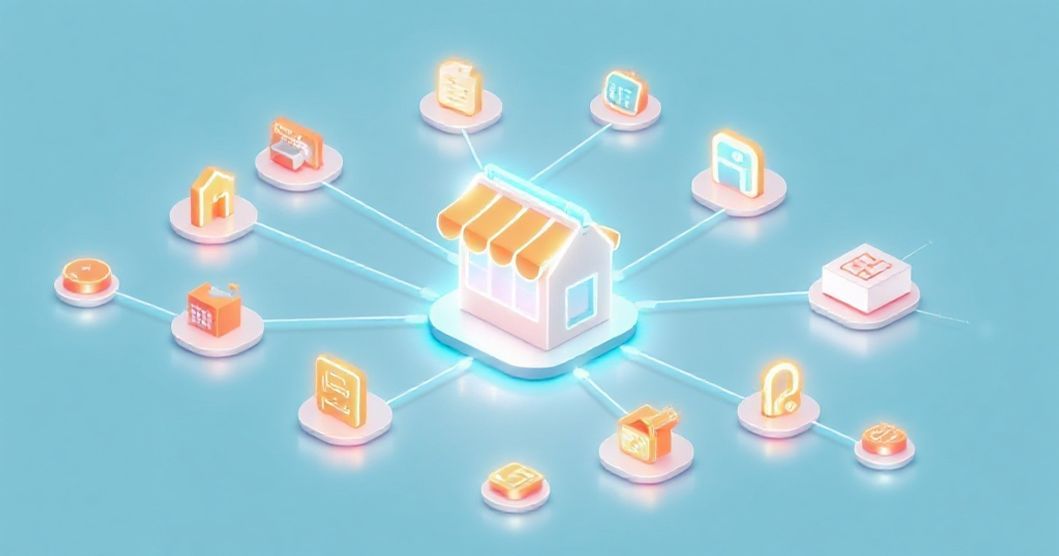Navigating the dynamic landscape of online retail requires strategic tools, especially for artisans and creators on platforms like Etsy. Integrating various software solutions with an Etsy shop can significantly transform daily operations, moving beyond manual tasks to streamlined processes. These powerful connections enhance efficiency, reduce the potential for errors, and ultimately support business growth. Understanding the array of available integrations empowers sellers to optimize their workflow, from managing inventory to automating customer communications and shipping. This exploration delves into the essential integrations that can redefine how an Etsy shop operates, offering a competitive edge in a bustling marketplace.
Understanding Etsy Integrations for Enhanced Selling
Etsy integrations refer to the process of connecting an Etsy shop with third-party applications and software. This connection allows different systems to share data seamlessly, automating tasks and centralizing information that would otherwise require manual input. For small businesses and independent sellers, these integrations are not merely conveniences; they are foundational elements for scaling operations and maintaining accuracy. By enabling a continuous flow of information between platforms, sellers can dedicate more time to creativity and product development rather than administrative burdens, fostering a more productive environment for their craft.
1. Inventory Management Integrations for Accuracy
Maintaining precise inventory levels is paramount for any e-commerce business, preventing both overselling and missed opportunities. Etsy integrations for inventory management automatically synchronize stock counts across multiple sales channels, ensuring that every product listing reflects the current availability. These tools monitor incoming and outgoing items, adjust quantities in real-time, and can even trigger reorder alerts when stock falls below a predefined threshold. Such automation minimizes manual updates, significantly reduces discrepancies, and helps sellers manage their physical products with greater confidence and less stress, leading to a smoother customer experience.
2. Streamlining Shipping and Fulfillment Processes
Efficient shipping is a cornerstone of customer satisfaction, and Etsy integrations designed for shipping and fulfillment can dramatically simplify this complex process. These solutions automate label creation, compare shipping rates from various carriers, and generate tracking numbers that are automatically communicated to customers. By integrating directly with postal services and logistics providers, sellers can process orders faster, reduce shipping errors, and offer clearer communication regarding delivery timelines. This automation frees up valuable time, allowing sellers to focus on product creation and customer engagement, rather than getting bogged down in repetitive shipping tasks.
3. Financial Management and Accounting Solutions
Accurate financial tracking is crucial for understanding a business’s health and meeting tax obligations. Etsy integrations with accounting software automate the recording of sales, expenses, and transaction fees directly from the Etsy platform. This means less manual data entry and a lower risk of human error, providing a clearer picture of profitability and cash flow. Sellers can effortlessly generate reports, reconcile accounts, and prepare for tax season with comprehensive, up-to-date financial data. These integrations transform complex bookkeeping into a manageable process, giving sellers greater control over their financial landscape and aiding strategic decisions.
4. Optimizing Marketing and Customer Relationship Management (CRM)
Building strong customer relationships and executing effective marketing campaigns are vital for long-term success. Etsy integrations with CRM platforms and marketing tools allow sellers to gather customer data, segment audiences, and automate targeted communications. This can include welcome emails, abandoned cart reminders, and personalized promotional offers, all designed to encourage repeat purchases and foster loyalty. By leveraging these integrations, sellers can gain deeper insights into customer behavior, tailor their outreach strategies, and build a more engaged community around their brand, turning casual buyers into dedicated patrons.
5. Integrating Print-on-Demand (POD) and Dropshipping Services
For sellers looking to expand their product offerings without the overhead of physical inventory, Etsy integrations with print-on-demand and dropshipping services are invaluable. These integrations automate the entire fulfillment process: when an order is placed on Etsy, it is directly sent to the POD or dropshipping supplier. The supplier then prints the item or sources the product and ships it directly to the customer. This model allows sellers to offer a wider variety of items, experiment with new designs, and scale their business without managing stock, making it an efficient way to diversify product lines.
6. Enhancing Productivity with Multi-Platform Management
Many Etsy sellers also operate shops on other e-commerce platforms, making multi-platform management a significant challenge. Integrations that centralize listings, orders, and inventory across various channels can dramatically boost productivity. These tools provide a single dashboard to manage all sales activities, preventing double bookings, ensuring consistent product information, and streamlining order fulfillment from one location. By connecting multiple storefronts, sellers save considerable time and effort, reduce the likelihood of errors, and maintain a cohesive online presence, allowing for more strategic expansion across different marketplaces.
7. Data Analytics and Reporting for Informed Decisions
Understanding sales trends, customer demographics, and product performance is critical for strategic business development. Etsy integrations with data analytics tools offer advanced reporting capabilities beyond what the standard Etsy dashboard provides. These integrations can track key performance indicators, identify best-selling items, analyze customer purchasing patterns, and evaluate the effectiveness of marketing efforts. With access to comprehensive, visualized data, sellers can make more informed decisions about product development, pricing strategies, and marketing investments, ensuring their business evolves in a data-driven manner.
Choosing the Right Integrations for Your Etsy Business
Selecting the most suitable Etsy integrations requires a thoughtful evaluation of specific business needs and goals. Sellers should consider which aspects of their operation consume the most time or present the greatest challenges. Prioritize integrations that offer significant automation, reduce manual effort, and align with desired growth trajectories. It is also important to assess the ease of setup, ongoing costs, and the level of customer support provided by the integration partner. By carefully choosing tools that complement their unique business model, Etsy sellers can create a highly efficient, scalable, and ultimately more profitable enterprise, fostering lasting success.






